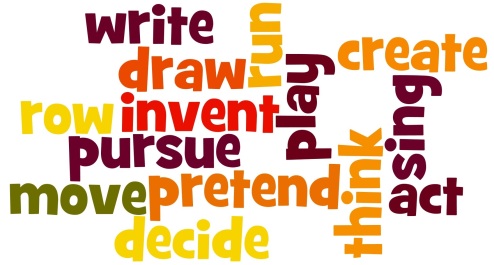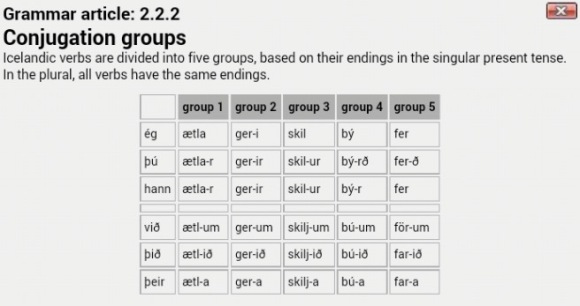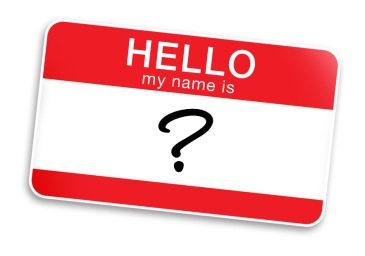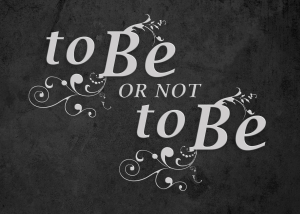
As you may have noticed, verbs in Icelandic don’t always conjugate in the same way. The most common verb endings are -a, -ar, -ar, -um, -ið, -a. These are the endings for what is often referred to as Group 1 regular verbs [if you study with Complete Icelandic] or Group 1 verbs [if you study with Icelandic Online]. The second most common verb endings are -i, -ir, -ir, -um, ið, -a. These are the endings for what is often referred to as Group 2 regular verbs [Complete Icelandic] or Group 2 verbs [Icelandic Online]. These are what are also referred to as „regular verbs„.
In Icelandic, as we have mentioned before, there are two main types of verb – strong and weak:
– „Strong“ verbs mark their past tense by means of changes to the stem vowel. For example, the verb „að vera“ is strong, as is „að bua„. In English, verbs such as „to sing“ are strong, where the past tense becomes „sang/sung“. HERE are further examples of strong verbs. The plural present tense endings of almost all strong verbs are regular: -um, ið, -a.
– „Weak“ verbs mark their past tense by means of adding a dental suffix [most usually a /t/ or /d/ sound]. For example, the verb „að tala“ is weak, as is „að ætla„. In English, verbs such as „to walk“ are weak, where the past tense becomes „walked“. HERE are further examples of weak verbs.
NB: There are also „irregular verbs„. These differ from strong verbs because all strong verbs feature a vowel change and have no ending in the past tense 1st person singular, whereas irregular verbs always have an ending in the past tense 1st person singular [and only some feature a vowel change]. For example, „að hafa“ is classed as an irregular verb [whilst also being classed as a weak verb].
For quick reference, here is the chart that Icelandic Online utilises. They spilt the verbs into 5 groups:

If you are still with us after all that, congratulations! Icelandic verbs for the most part are pretty regular but, as with English, the most common ones are the most irregular – and unfortunately you just need to learn them. To help you out, I highly recommend Beygingarlýsing íslensks nútímamáls and Verbix Icelandic Conjugation.


